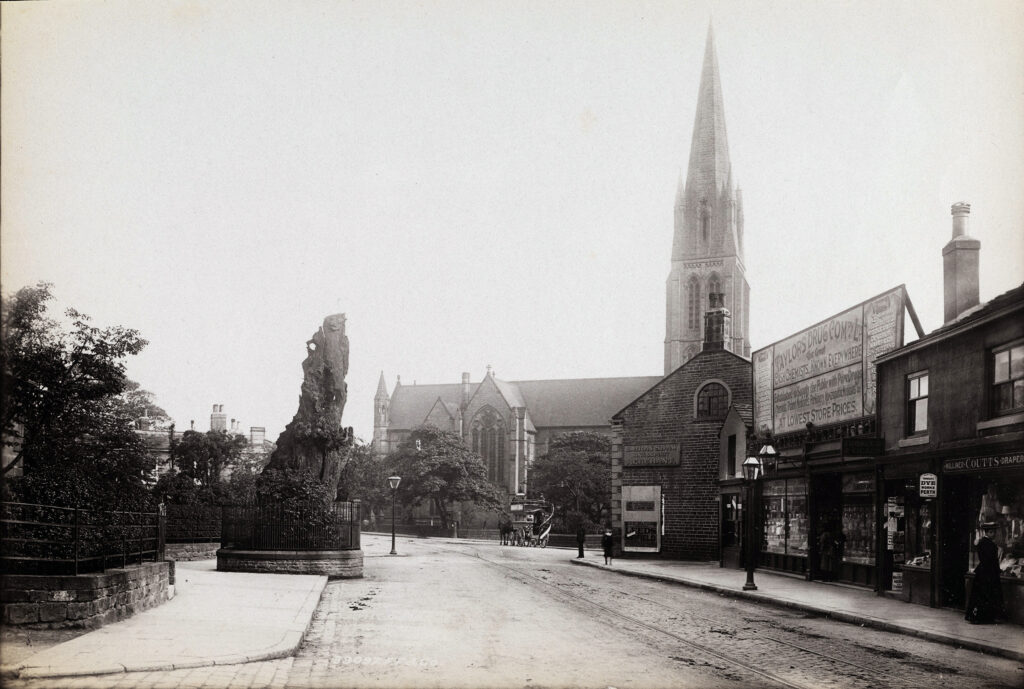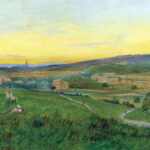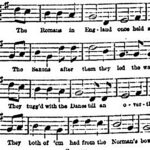26 May 1941: Headingley’s Shire Oak falls, legendary site of Anglo-Saxon local government between Aire and Wharfe

Francis Frith’s 1897 photograph of St Michael’s Church, the Shire Oak, a horse omnibus and much else at Headingley (Frith 1897).
Ralph Thoresby. 1715. Ducatus Leodiensis. London: Maurice Atkins. Get it:
.Excerpt
That this wapentake of Skire-ake was so denominated from some remarkable oak, to which the inhabitants repaired upon public occasions, was hinted before. I shall here add that in this place, is a venerable oak, that not in my opinion only, but of several learned and ingenious gentlemen, whose public employment in administering justice in all parts of the district, affords them better opportunities of observing and enquiry, is the most likely of any in the wapentake to have given the name to it, and, very probably, this is the reason why, in public subsidies, etc., Headingley leads the van, rather than towns much more considerable in other respects. There is no necessity of supposing this to be the same individual oak; and yet if some fruit trees, whose continual bearing does much impair and shorten their lives, may possibly arrive to a thousand years of age, how much longer may we reasonably imagine those hardy forest trees may last, whose nature is more compact, resinous or balsamic, amongst which the oak is esteemed one. If 300 years are allotted for the growth of the apple or pear trees, as much for their stand, and 300 more for their decay, a little more will bring this very oak to the times that such sub-divisions of counties can pretend to.
Comment
Comment
David Thornton says that in 1941 “it gave a sigh and fell forward on the rails surrounding it” (Thornton 2013).
Claire Rae Randall has suggested that Tolkien modelled Treebeard on the Shire Oak, close to his initial lodgings in Headingley at 21a St Michael’s Road, replaced by Muir Court. Here is the meeting with Merry and Pippin:
A large knob-knuckled hand was laid on each of their shoulders, and they were twisted round, gently but irresistibly; then two great arms lifted them up. They found that they were looking at a most extraordinary face. It belonged to a large Man-like, almost Troll-like, figure, at least fourteen foot high, very sturdy, with a tall head, and hardly any neck. Whether it was clad in stuff like green and grey bark, or whether that was its hide, was difficult to say. At any rate the arms, at a short distance from the trunk, were not wrinkled, but covered with a brown smooth skin. The large feet had seven toes each. The lower part of the long face was covered with a sweeping grey beard, bushy, almost twiggy at the roots, thin and mossy at the ends. But at the moment the hobbits noted little but the eyes. These deep eyes were now surveying them, slow and solemn, but very penetrating. They were brown, shot with a green light (Tolkien 2005).
The (Domesday Book) Hundred of Skyrack was pretty extensive (Powell-Smith 2021):

Something to say? Get in touch
Original
That this wapentake of Skire-ake, was so denominated from some remarkable oak, to which the inhabitants repaired upon public occasions, was hinted before. I shall here add, that in this place, is a venerable oak, that not in my opinion only, but of several learned and ingenious gentlemen, whose public employment in administering justice in all parts of the district, affords them better opportunities of observing and enquiry, is the most likely of any in the wapentake to have given the name to it, and, very probably, this is the reason why, in public subsidies, etc., Headingley leads the van, rather than towns much more considerable in other respects. I have the original of such an one in Henry VIII’s time, engrossed upon parchment, and subscribed by the King’s commissioners. There is no necessity of supposing this to be the same individual oak; and yet if some fruit trees, whose continual bearing does much impair and shorten their lives, may possibly arrive to a thousand years of age, as is affirmed in a treatise that is recommended as both learned and rational [], by an excellent person who is certainly so himself, how much longer may we reasonably imagine those hardy forest trees may last, whose nature is more compact, resinous or balsamic, amongst which the oak is esteemed one; some of which, Pliny tells us, were growing in his time in the Hyrcinian Forest, which were thought co-evous with the world itself. If 300 years are allotted for the growth of the apple or pear trees, as much for their stand, and 300 more for their decay, a little more will bring this very oak to the times that such sub-divisions of counties can pretend to; for I take this shire oak in a restrained sense, as to this wapentake (as Scynman is Hundredi Praepositus) not in the more general, as that in Worksop Park, called shire oak, because it drops into three shires, viz. York, Nottingham, and Derby.
And though this place flourished under the Saxons, yet it had the rare hap to increase under the Normans, when most of these northern parts were harassed; so that what in the times of Edward the Confessor was but worth 40s. was then valued at 4l. as appears by Domesday Book.
384 words.
Similar
 30 May 1835: Alfred Austin, future poet laureate, “Banjo-Byron that twangs the strum-strum,” is born into rural splendour at Ashwood, 48 Headingley Lane, Leeds
30 May 1835: Alfred Austin, future poet laureate, “Banjo-Byron that twangs the strum-strum,” is born into rural splendour at Ashwood, 48 Headingley Lane, Leeds 25 September 1066: The Stamford Bridge massacre by Harold Godwinson’s army of Harald Hardrada and Tostig Godwinson’s force – symbol of the end of the Viking Age
25 September 1066: The Stamford Bridge massacre by Harold Godwinson’s army of Harald Hardrada and Tostig Godwinson’s force – symbol of the end of the Viking AgeSearch
Donate
Music & books
Place-People-Play: Childcare (and the Kazookestra) on the Headingley/Weetwood borders next to Meanwood Park.
Music from and about Yorkshire by Leeds's Singing Organ-Grinder.



 Bluesky
Bluesky Extwitter
Extwitter